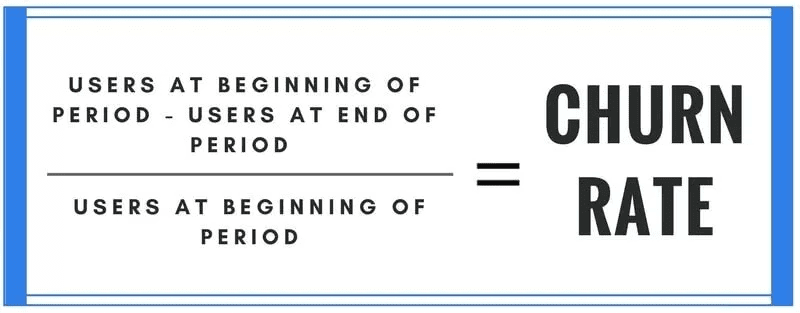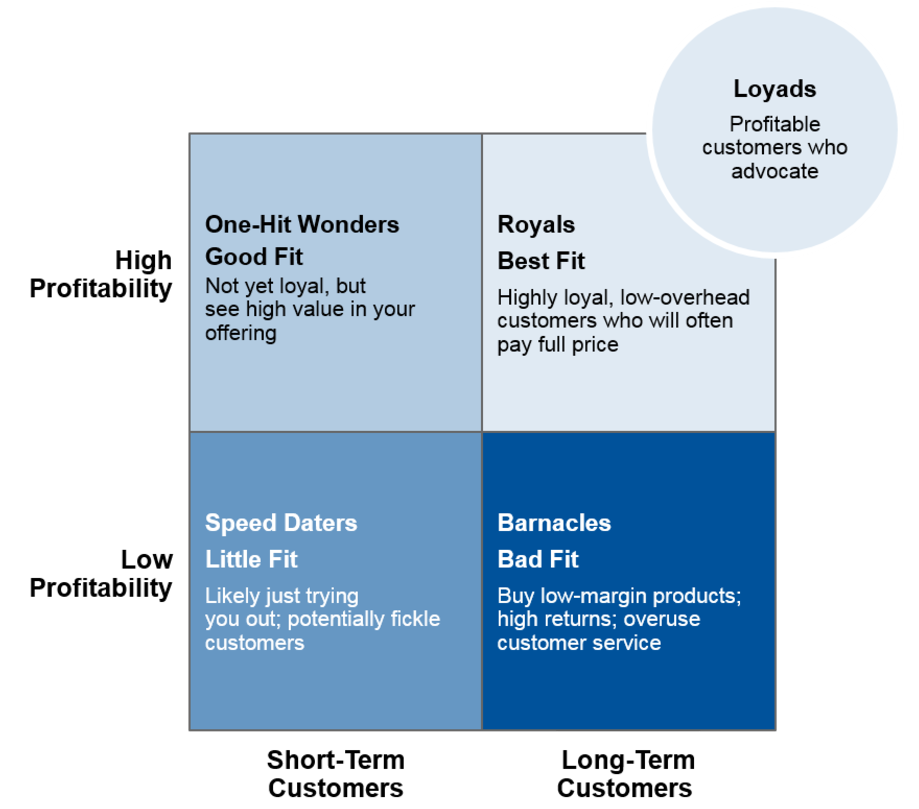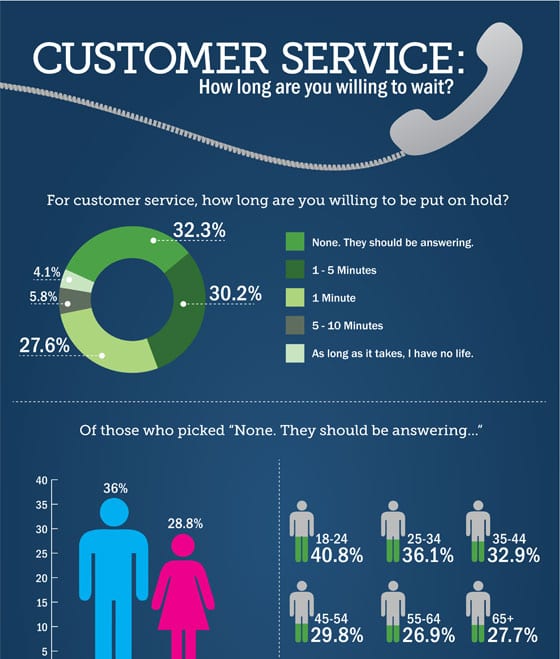The only thing harder than working in a call center is managing one.
Insanely high standards cause stress, and can lead to massive turnover rates. Sometimes it even seems like you're being set up to fail, like when companies hire five managers for more than 400 agents.
And—in case upper management isn't hard enough—then there are the customers. Ana manages a team of 10 customer service representatives at StickerYou, and told me about a customer who wanted a picture printed on a sticker.
The customer used her smartphone to take a picture of her computer monitor, which was displaying the actual image she wanted printed. She then scanned the phone and sent the scan to StickerYou.
The weirdest part? This happened more than once.
Managing a call center well isn't easy, but it is possible. You can do it successfully, and learn from others in your industry who already are.
To that end, I've gathered five best practices for successful call center management. Let's get started, and maybe make your life a little easier in the process.
1. Track customer experience
Deloitte's most recent "Global Contact Center Survey" asked call center managers what industry changes they've observed in recent years, and how they plan to do business differently in light of changing market conditions.
These six slides give a quick, graphical overview of trends identified by the survey:
Five call center management best practices to know (slides from the Global Contact Center Survey)
Call center managers have begun prioritizing customer experience and satisfaction over revenue in their KPIs in response to the c-suite's prioritization of CX improvements over call center revenue.
If you're not already using customer surveys to collect and present customer feedback as a measure of customer satisfaction, start now.
Don't stop tracking revenue, of course. But if your bosses want to know how business decisions are impacting CX, robust historical data is your friend.
Getting feedback is a priority for most call centers, and should be for yours as well. But it's not easy. Most customers ignore feedback requests, especially over email. Online surveys only have a 10 to 15% response rate.
Check out these seven tips to up your actionable customer feedback game.
2. Track your churn rate
Increasing your customer retention rate by just five percent can boost your profits by 25 to 95%, according to research from Harvard Business School.
Gartner's “CMO Insight: Build a Powerful B2B Customer Reference Program for Loyalty and Profits" report shows that increasing customer loyalty increases profits, decreases sale costs, and lends your brand credibility (full research available to Gartner clients).

Churn rate formula (via source)
Retaining customers requires nipping churn in the bud. To do that, you have to know what church is.
“Customer churn rate is a metric that measures the percentage of customers who end their relationship with a company in a particular period," Jill Avery, a senior lecturer at Harvard Business School and an author of HBR's Go To Market Tools, told HBR.
Whether you measure retention rate or churn doesn't really matter; they're two sides of the same coin. According to Avery, though, churn is becoming more popular as a metric. And investors tend to be more interested in churn than retention rate.
Avery recommends measuring your churn rate by year unless your customers pay monthly (in which case you should measure your monthly churn rate). Pay attention to changes in churn rates, and how they correspond to changes in your products or services.
3. Segment your customers
It's not enough to track how many are churning, you also need to keep track of who's churning. To find out, first divide your customers into segments.
In CMO Insight, Gartner offers the following rubric for classifying your customers based on their loyalty and profitability:

Image from “CMO Insight: Build a Powerful B2B Customer Reference Program for Loyalty and Profits" (full research available to Gartner clients)
You can segment customers based on:
Their likelihood to become loyal
Their likelihood to churn
How profitable their loyalty is
According to customer strategist Rachel Barton, many organizations unconsciously assume that their digital-savvy customers are the most profitable. It's true that these customers generally have a lower cost to serve, and businesses can woo them through personalized content and tailored services.
Barton says that “this belief has led them to over-invest in digital capabilities and channels so they can give customers (particularly millennials) more digital experiences that they supposedly crave. However, the assumption is not entirely accurate."
To find out who your most profitable customers actually are, make sure you're using data analytics to quantitatively measure the ROI of CX initiatives. You need to decide which numbers you're going to use to measure the value of customer service, and you need technology to help you calculate the value of happy customers and the cost of unhappy ones.
Some customer loyalty software—especially platforms with CRM functionality—consolidates customer data to reveal which of your customers are in which category, letting you target specific, separate segments of your customer base.
To learn more, check out this post:
4. Manage your average time in queue
This is an oldie-but-goodie for call center managers. A lot has changed in call center management, but this remains important.
Microsoft's 2017 State of Global Customer Service Report examines which customer service channels are most (and least) widely used, as well as where customer preferences are heading.
You won't be surprised to learn that phone calls remain the most popular customer service channel among U.S.-based respondents, beating out email, in-person, live chat, mobile apps, self-service, search engines, social media, online communities, text messages, and chatbots.
Here's the most important call center stat to know: When asked to identify the most frustrating aspect of a customer service experience, over a third of U.S. respondents (34%) chose “Automated Telephone System (IVR)/inability to reach a live person for customer support."

How long customers are willing to wait to speak to a human on the phone (via source)
Tracking how long callers wait to speak to someone, on average, is a great idea because it tracks pretty closely with customer satisfaction. Customers who have to endure long wait times are less satisfied than customers who get help right away, all else equal.
Find this call center KPI by dividing the total time callers wait to speak to a human by the total number of calls agents answer. If your number is longer than five minutes, work on shortening it by hiring more agents or diverting calls with self-service or live chat support.
5. Invest in analytics
One thing these call center management best practices all have in common is that they're fundamentally analytics projects. No human can monitor every call, which is why you need software to help you measure things like average wait time and customer happiness.
It should come as no surprise that the majority of call center manager respondents in the "Global Contact Center Survey" listed advanced analytics as one of their biggest priorities.

Call center analytics KPIs (via source)
Predictive analytics is what happens when you paint a picture with data of what happened in the past in order to predict what is likely to happen in the future. It's one of our five tech support trends for 2018, and CX analytics is one of our five customer experience trends to watch out for in 2018.
Next steps for leveling up your call center
To improve call center management, your peers are investing more in analytics than ever before. They're measuring customer experience, churn rates, and queue wait times. They're segmenting their customers, and investing in analytics to help them get this done.
If you're ready to track more data with less legwork, check out our thorough listing of customer experience software. To help you manage wait times, look through our call center software directory, filtered by escalation management capabilities.